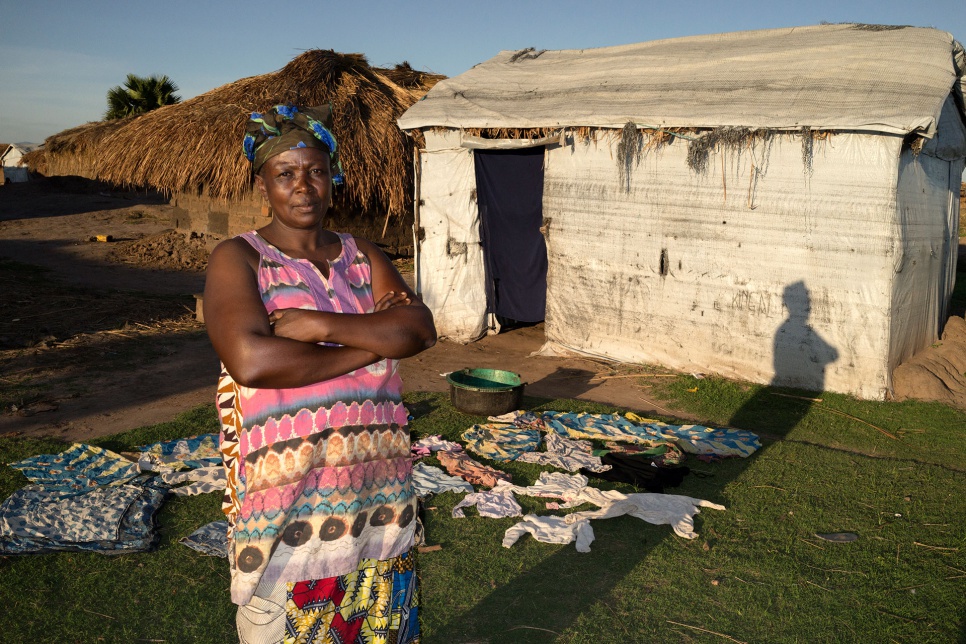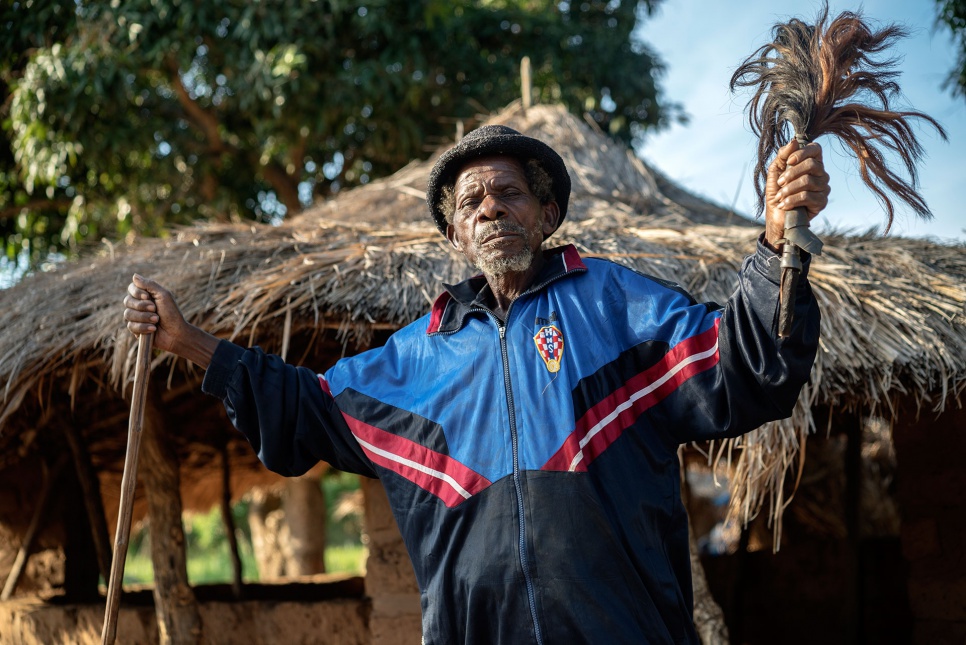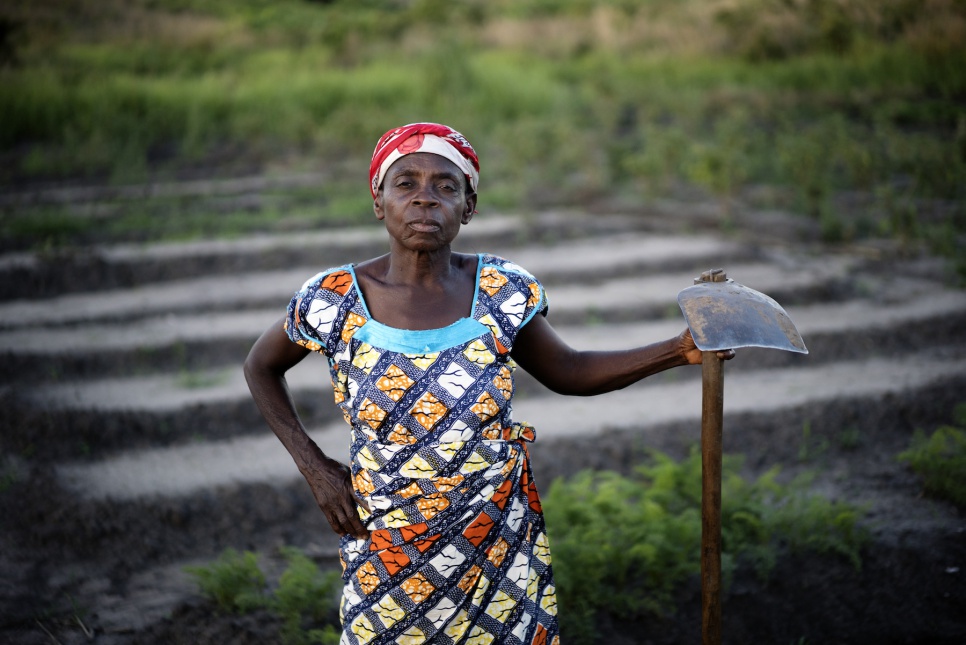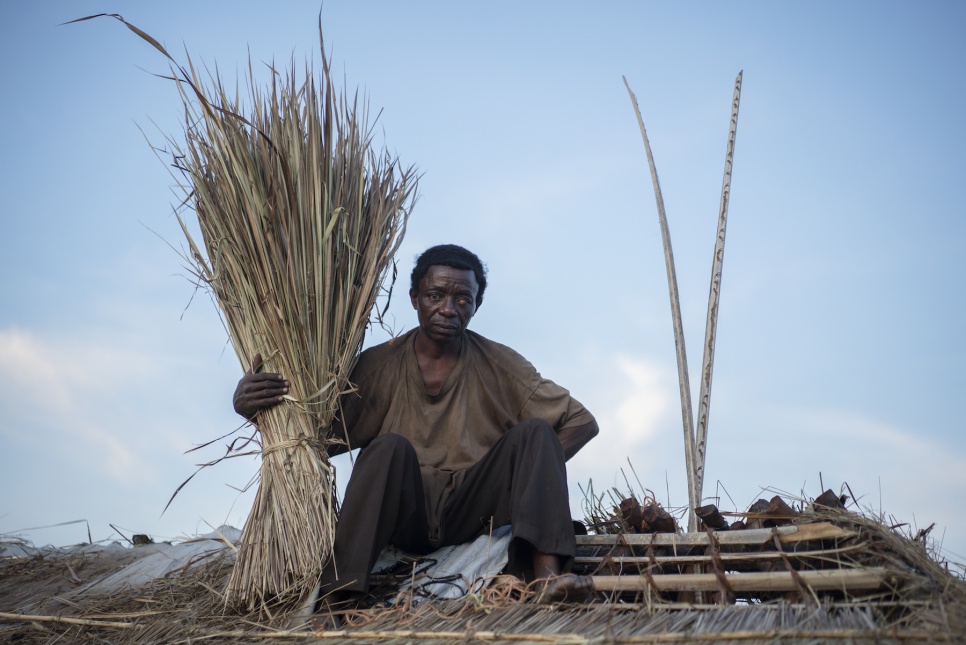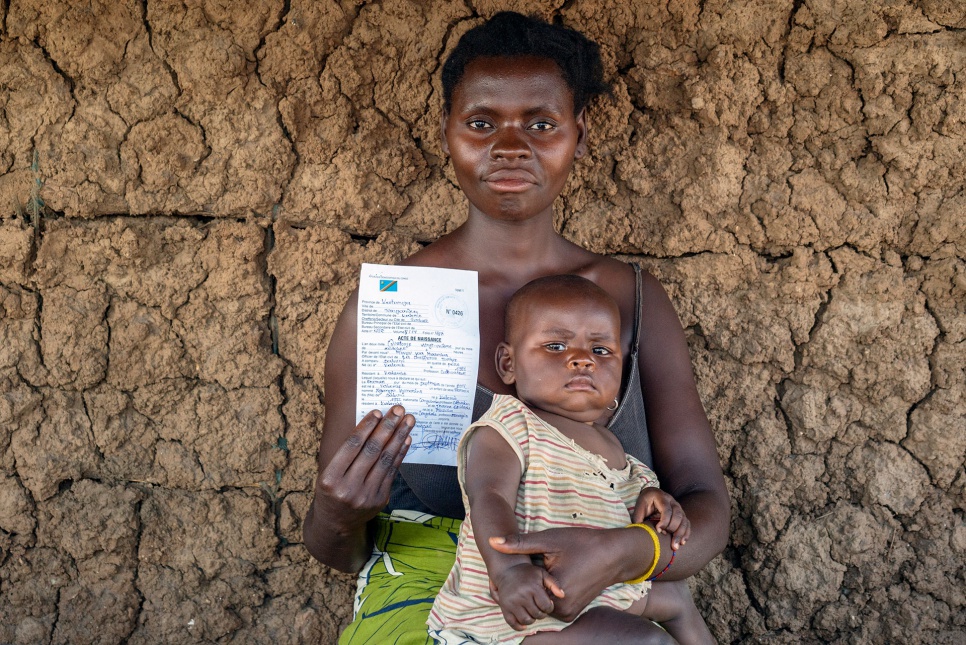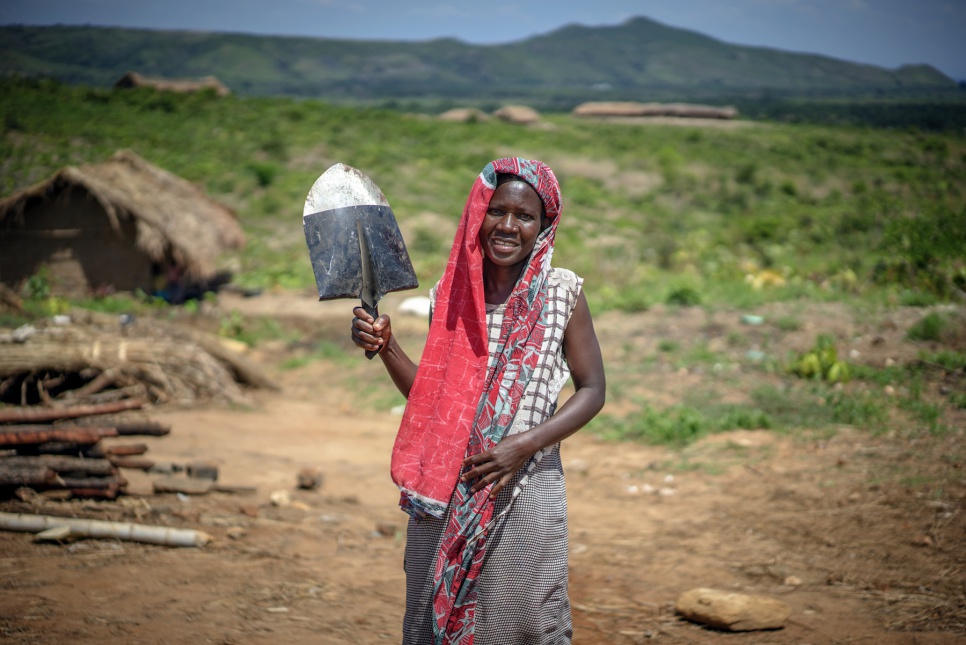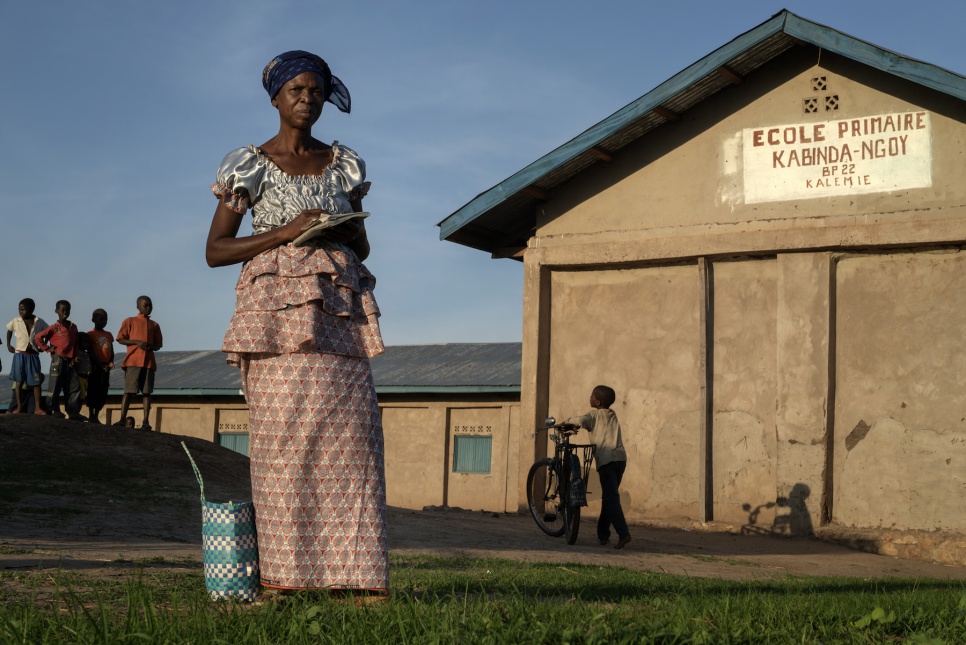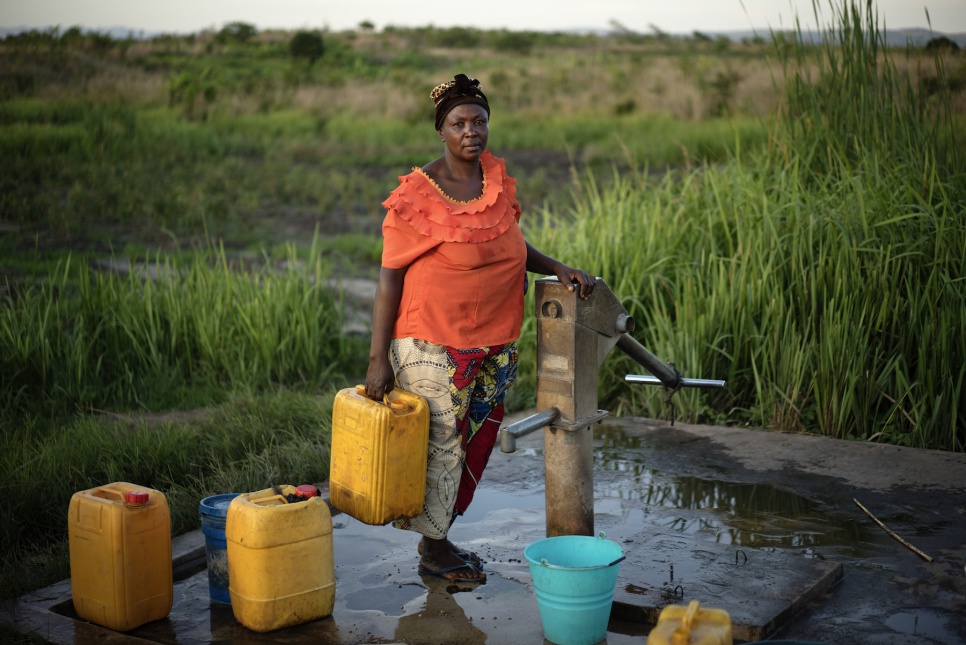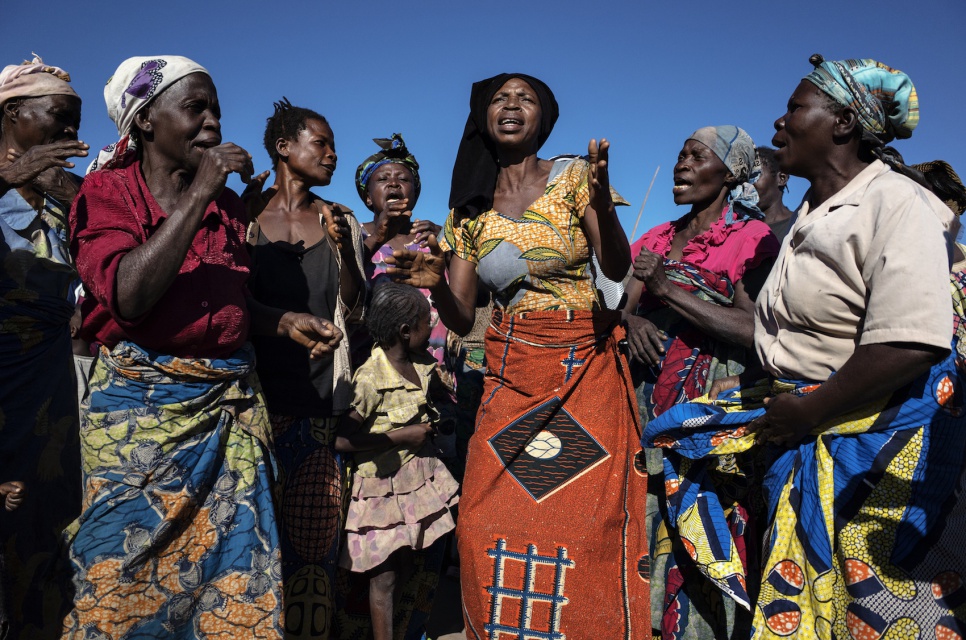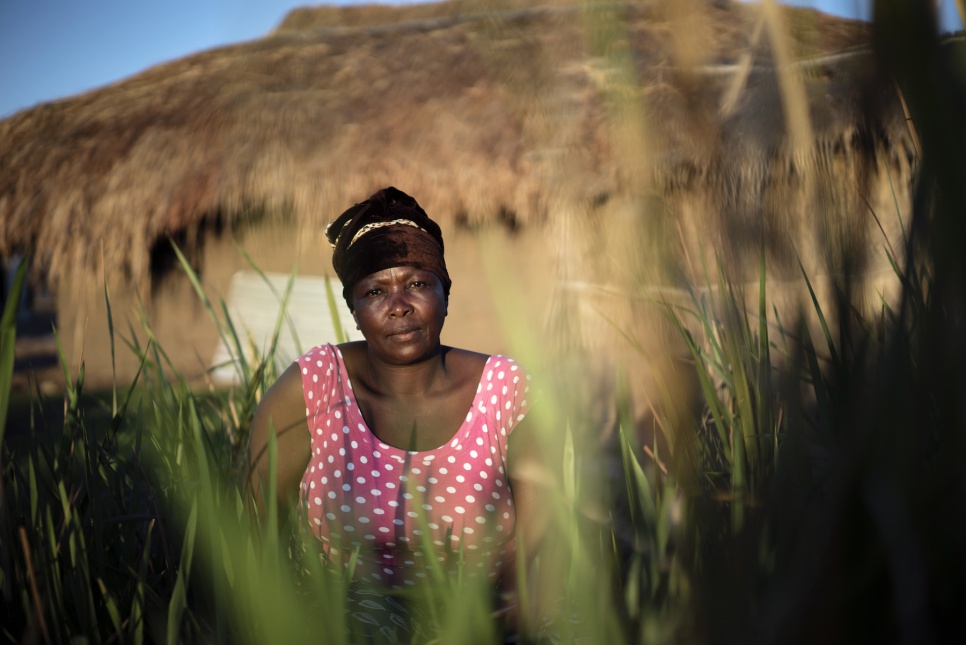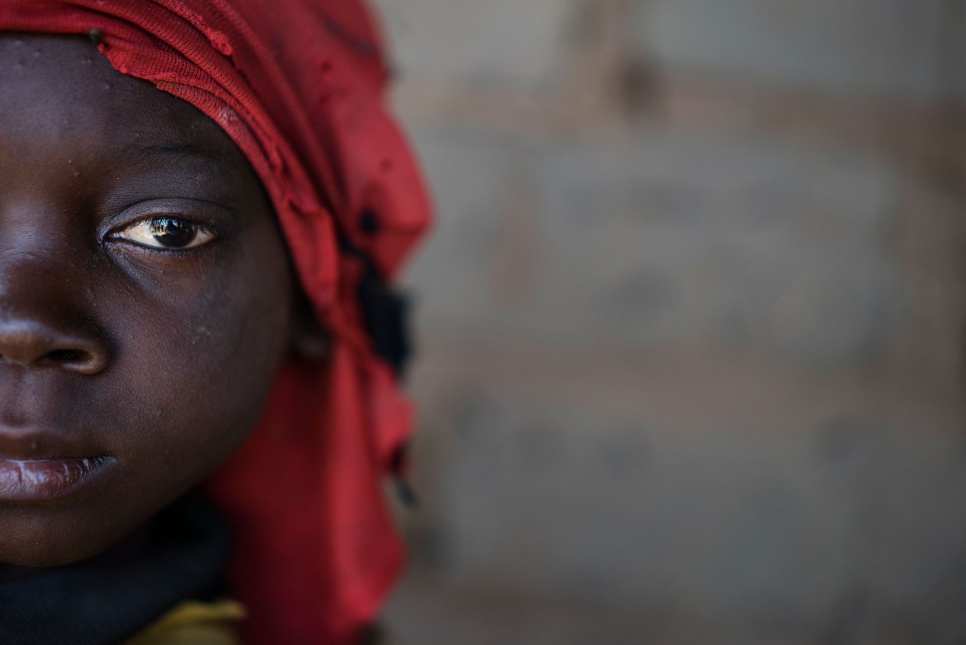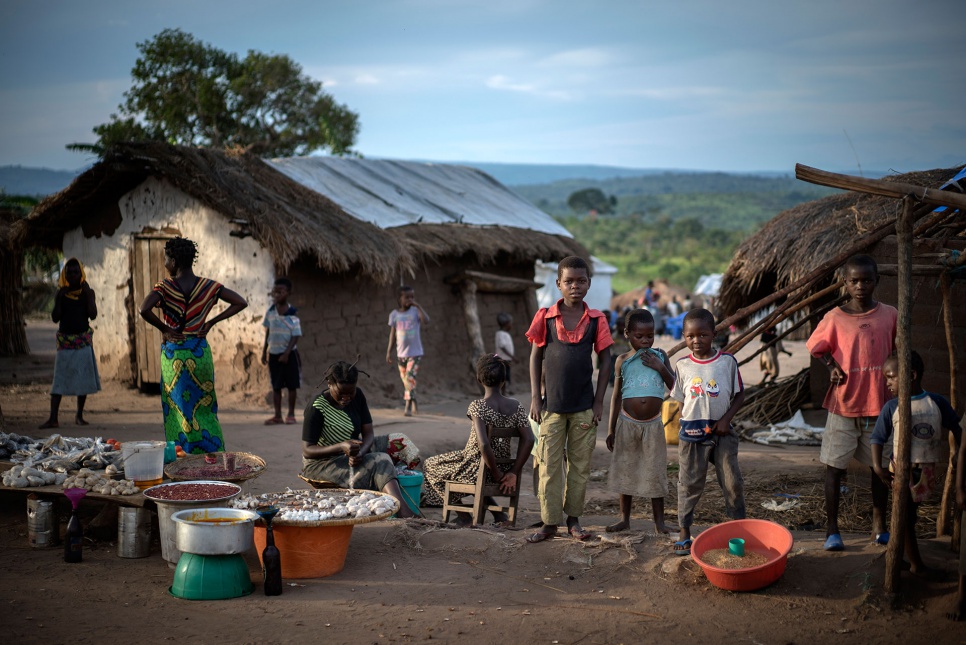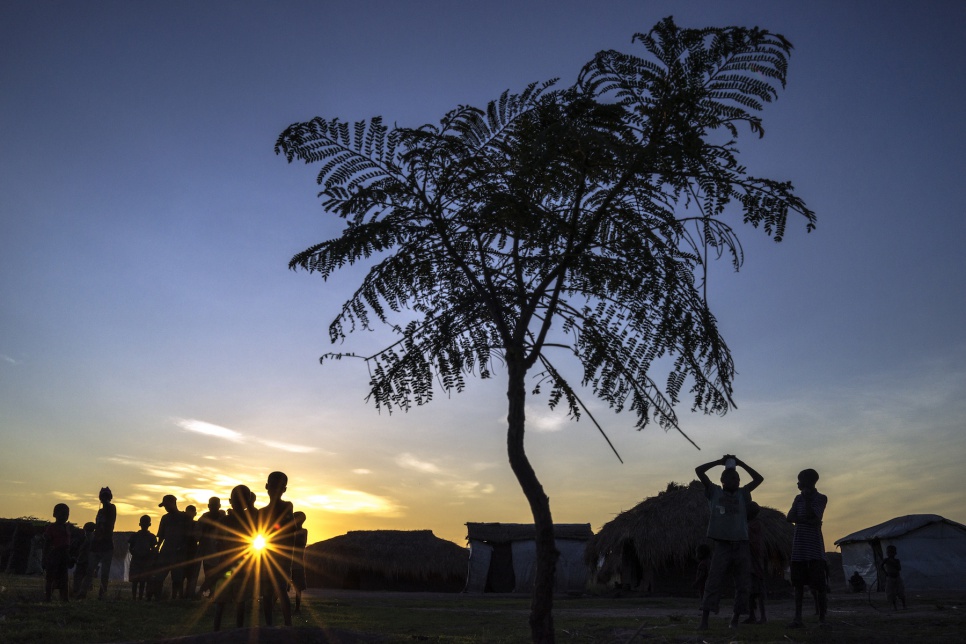A Camp Becomes a Village
As hopes fade for peace back home, many survivors opt to settle for good in Katanga Province. The host community responds with open arms.
Okenge Sakina collects water at the well in Lukwangulo, DR Congo.
© UNHCR/Brian Sokol
The sun is setting at Lukwangulo camp in Katanga, Democratic Republic of Congo, as women return from the fields and wells. On their lips is a traditional and joyful song. On their heads are cassava leaves. Tonight, they will sleep soundly – far from the sound of the bullets.
Sakina, a 50-year-old mother of eight, is one of the women leaders at the camp, which was set up in October 2010 to host people fleeing violence and conflict in South Kivu's Fizi territory. It is now home to nearly 3,500 displaced people, many of whom hope to stay.
"We have no desire to go back," Sakina tells me. "Women, girls and children who are here have been raped. They can't forget and they are scared to go back. People have lost their life there. Some women are widows. These are the reasons why we cannot go back home."
"Women, girls and children who are here have been raped. They can't forget and they are scared to go back."
Rashidi Mahonga heads the committee of internally displaced people, or IDPs, in Lukwangulo. He knows that the volatile situation back home leaves many people here with little choice.
"The war is not finished," he says, explaining that some who tried to return to their villages and fields saw that armed groups were still controlling the area. "We are hunters. We know when people are passing. We see the traces of their boots."
In an effort to assist those who wish to stay in Lukwangulo, UNHCR opened discussions with the local authorities. Like the displaced, they support the idea.
"I welcomed them; I gave them land for agriculture," says Kabwa Asumani, the 84-year-old chief of Lukwangulo village. "You see that they have constructed houses on the land I gave them. I have not yet had any problem with them. As long as they are gentle, I have no problem with them. If they want to stay, they can stay here in peace. I don't see any problem."
"If they want to stay, they can stay here in peace. I don't see any problem."
Chief Rashidi says the IDPs feel very welcome in the area. "We have been very well received here by the chief of locality. We feel well and we want to stay here."
Having received the green light for their local integration by the chief and the local authorities, residents of the Lukwangulo IDP site will now start converting it into a village. The first step is to transform their plastic-sheeting shelters into traditional houses made of mud and straw. UNHCR will provide iron sheets for the doors and the windows.
However, constructing more permanent shelters is not the only thing that IDPs will need in order to settle in Lukwangulo. They also require access to education for their children, health care, a clean water supply, and the ability to be self-sufficient.
Back in South Kivu, many children missed out on an education. "Children could not walk to go to school because of insecurity," recalls Rashidi. "It was dangerous."
"Pregnant women who go to the health centre for the deliveries sometimes give birth on the road."
UNHCR is now working with the National Commission for Refugees and has asked local authorities to accredit the school at the Lukwangulo site with the Ministry of Education. This would officially recognise the teachers, allowing them to be paid by the State.
But other basic services are still missing.
"The health centre is five kilometres away," says Sakina. "Pregnant women who go to the health centre for the deliveries sometimes give birth on the road. If we fall sick at night, it is a big problem. We also don't have enough money to pay even for the reference booklet, which costs 2,800 francs [approximately USD 3 and used by the health personal to keep track of the consultations]. We would like to ask for the construction of a health post in Lukwangulo."
To help the displaced people become more self-sufficient and less dependent on humanitarian assistance, UNHCR distributes agricultural tools, such as spades, so they can cultivate land allocated by the local chief.
Agnes Ntambwe is a 52-year-old teacher. "We cannot continue to reach out our hand to be assisted," she tells me. "We have hands to work, but we need seeds and agricultural tools. The land has been given to us. The chief of the village gave to each of us a piece of land according to his strength to cultivate. But in addition, we also would like support to develop other income-generating activities, such as bakery and selling clothes."
Sakina continues: "In order to take care of our families, we buy vegetables and sell them at the market, which is 12 kilometres away. We are asking whether it would be possible to set up a market here. For now, we are selling bananas on the land of someone."
"We cannot continue to reach out our hand to be assisted. We have hands to work, but we need seeds and agricultural tools."
Access to water and sanitation can also be challenging. "We have only one well, even if we are many," Sakina says. "During the dry season, there is a shortage of water. We would like to ask whether there is a possibility to dig one or two more wells."
Rashidi adds that although they can dig latrines, they do not have the material to cover them.
Despite these many challenges, the residents of the Lukwangulo site are unanimous: they want to stay. And theirs is not the only IDP site to opt for local integration. Five others in northern Katanga have expressed similar wishes. Two of them, like Lukwangulo, have already received approval from the local authorities.
"Even if we live in difficult conditions, we continue to live," says Sakina. "Here we are able to sleep at night. There [in Fizi], we could not sleep because of insecurity."
Nearby, a group of almost 50 IDPs agree. "We will stay here," one of them says, "for the rest of our life."

